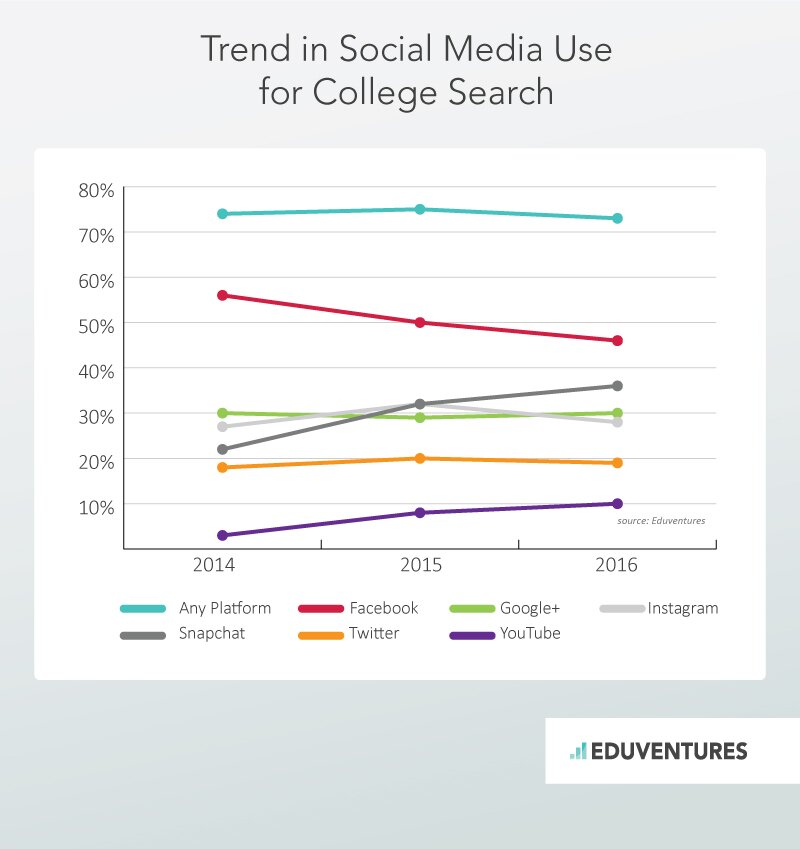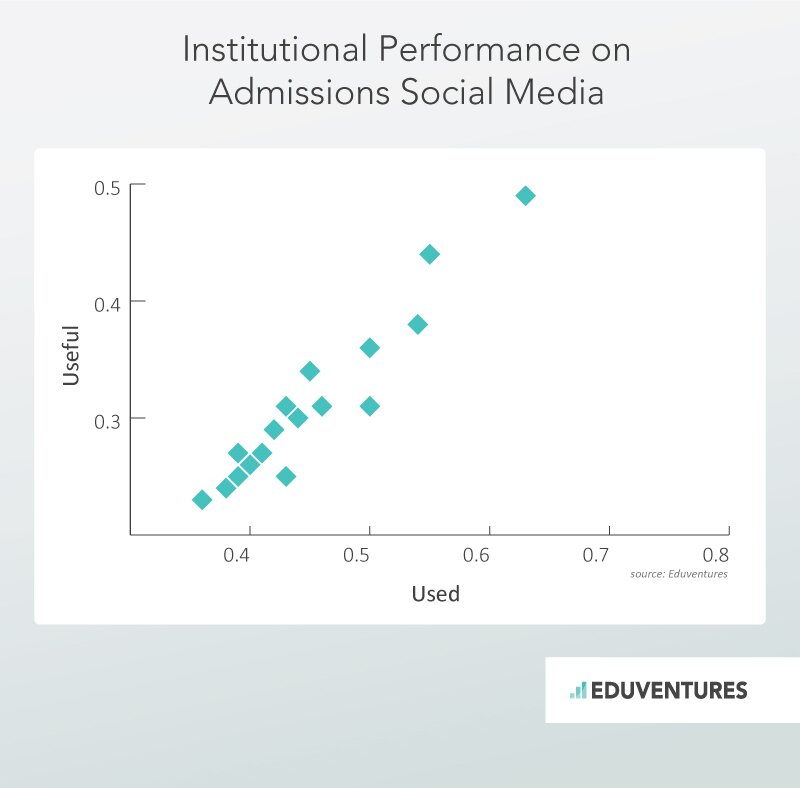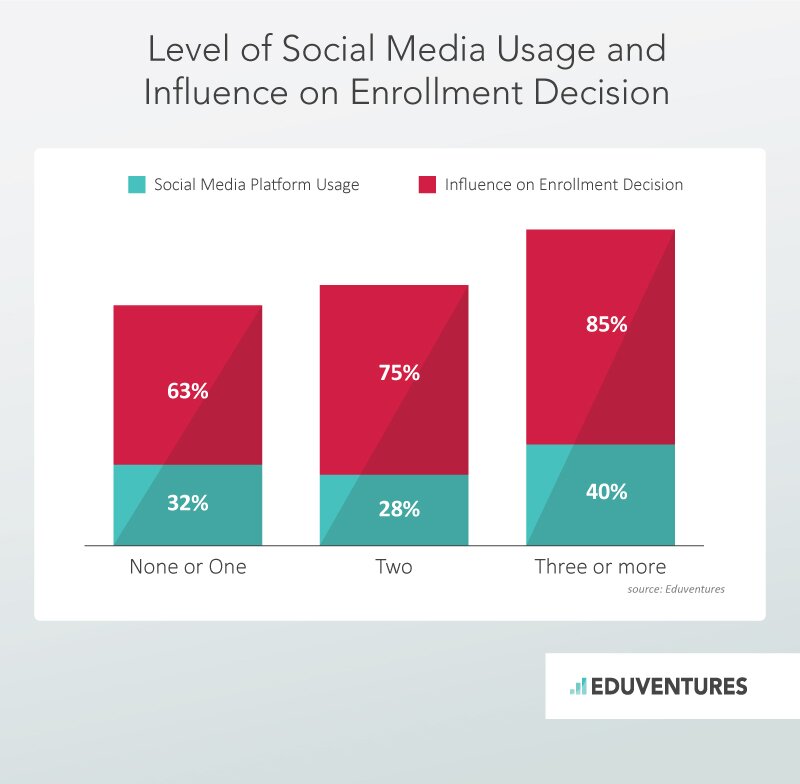How much does social media really matter when recruiting prospective undergraduates? An open question, perhaps, but colleges and universities intuitively know social media recruiting strategies are increasing in importance every year.
The overall evidence supports that young people live more and more of their lives through social media. At our 2016 Eduventures Summit, keynote speaker Tammy Erickson, discussed how members of Generation Z are “normal users” of technology and social media. In other words, social media use is unexceptional, a given in their lives.
A recent report from the Pew Research Center shows that teens are diversifying their use of social media: 71% use more than one site, almost all (92%) are online daily, and 81% of older teens use social media. So why not go with the flow?
Eduventures’ admitted student data, focused specifically on traditional undergraduate college search, also supports this viewpoint. Overall use of social media explicitly for learning about colleges and universities has leveled off; about three-quarters of admitted students say they used some type of social media for this task.
Further, the average number of social media platforms used for college search rose from 2.2 to 2.4 between 2014 and 2016. Instagram is rising to rival Facebook in importance, and Snapchat is showing nascent growth. In the next few years new social media players will try to establish their own mindshare with Gen Z. All this indicates that we are at the point of normalized, ubiquitous, and complex use of social media for college search.



Source: Eduventures, Survey of Admitted Students, 2014, 2015, and 2016
We also know that institutions are at vastly different stages in their ability to navigate the social media environment to create engaging experiences that help students make application and enrollment decisions. Some institutions are gaining better traction than others, but none in our sample exceeded mediocre performance in the eyes of their admitted students. The chart below shows the disparate social media performance among institutions that participated in Eduventures’ 2016 Survey of Admitted Students. The highest performing institution engaged nearly two-thirds of its admitted students with its admissions social media effort, but note that only half of them found it useful. At the low end, the least successful institution engaged slightly more than a third of its admitted students while less than a quarter of them found it useful. While those are starkly different stories of social media success in impressing students, our data shows clearly that every institution has room for improvement.
Source: Eduventures, Survey of Admitted Students, 2016
Multi-channel engagement makes an impact
It’s not all bad news, though. Our survey also shows that social media can have a positive effect on the enrollment decision. Nearly all (91%) of that top performer’s enrolling students who had used social media said the school’s social media made a positive impact on their decision. Even 69% of the low performer’s enrolling social media users said the same. What gives? While admitted students may question the overall usefulness of social medial, it does reach a core set of students that is seriously considering your institution. It simply might be the case that Gen Z expects social media as a normal course of action. It might also be the case that any social media effort is a good start for students who care enough about your institution to engage, but better social media makes for better decision support for these students. So, how do you elevate the positive effect of social media on enrollment choice? The evidence shows that using multiple platforms is strongly related to improved influence on enrollment decisions. According to our survey, the top six most used social media platforms were Facebook (46%), Instagram (36%), YouTube (30%), Twitter (28%), Google+ (19%) and Snapchat (10%). But the deeper question is how to interweave these platforms into their most potent combinations. One approach is to simply consider market reach—not a bad place to start if you have limited resources. To step up your game, however, consider that these platforms can be powerfully combined to build the multi-faceted narrative your institution wants to convey. Our data shows that use of multiple platforms of social media correlates to greater influence of social media on the enrollment decision. If the story resonates, it creates opportunities for further engagement, a virtuous cycle that can build across platforms.


